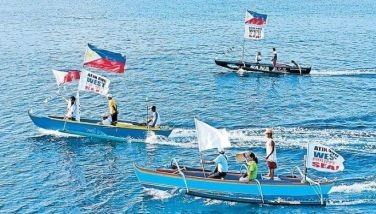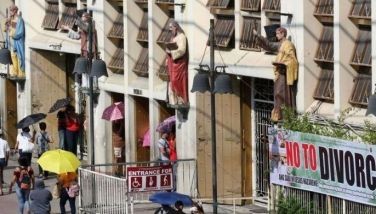People advised to position selves under sturdy objects during quake
ANGELES CITY , Philippines – In the event of a strong earthquake seek protection under tables, beds and other sturdy objects, not beside them.
The Philippine Institute of Volcanology and Seismology (Phivolcs) has dismissed an email from a supposed officer of the American Rescue Team International (ARTI) advising people to position themselves beside sturdy objects and not under them as listed in the quake response measures issued by government authorities.
The email “Save Your Life with the Triangle of Life” was written by a certain Doug Copp who identified himself as the “rescue chief and disaster manager of ARTI.”
“It’s inadmissible. People should consult with recommendations of authoritative sources on such matters before they believe,” said Phivolcs geologist Charmaine Villamil, who has also learned about the email.
Copp’s email spread rapidly after a powerful quake and tsunami hit Japan on March 11. Schools were reported to have passed on this advice to students.
In the email, Copp mentioned having rescue experience in 875 collapsed buildings and collaboration with rescue teams from the United Nations and 60 countries.
Copp said in a collapsed building, an object such as table creates a triangular space which could save lives during an earthquake. He cited a case of a collapsed building in Mexico City during a strong earthquake in 1985, noting that those who hid under tables were crushed.
“Simply stated, when buildings collapse, the weight of the ceilings falling upon the objects or furniture inside crushes these objects, leaving a space or void next to them – NOT under them. This space is what I call the ‘triangle of life’,” Copp said in the email.
Villamil said that Copp’s advice is contrary to the usual recommendation of “drop, cover, and hold on” during earthquakes. “During earthquakes, the first concern is to avoid injury from falling objects,” she said. “People should not readily believe such information but rather find out from authorities.”
She noted that the recommendations of Phivolcs are similar to those issued by the US Geological Survey and the Japan Meteorological Agency. Earlier, the American Red Cross also dismissed Copp’s recommendations. “Mr. Copp of ARTI, Inc. does not seem to distinguish that the recommendation to ‘drop, cover, and hold on’ is a US-based recommendation based on US Building Codes and construction standards,” it said. “Engineering researchers have demonstrated that very few buildings collapse or ‘pancake’ in the US as they might do in other countries. Using a website to show one picture of one US building that had a partial collapse after a major quake in an area with thousands of buildings that did not collapse during the same quake is inappropriate and misleading,” it added. – With Helen Flores
- Latest
- Trending





























